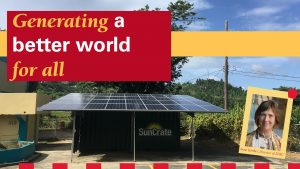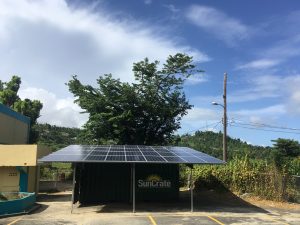
Anne Kimber is an innovator and leader of electric power and energy-related fields. As the Director of the Electric Power Research Center (EPRC) within the Department of Electrical and Computer Engineering at Iowa State University, her level of expertise is valuable and seemingly limitless.
EPRC works to promote and expand electric power and energy-related research through membership fees and broad collaboration with industry on research grants.
Kimber, with Professors Kristen Cetin (Computer Engineering at Michigan State University), Ulrike Passe (ISU architecture) and Cristina Poleacovschi (ISU civil, construction and environmental engineering), recently received a grant from the Iowa Energy Center for $287,354. The goal with this grant is to build a residential housing efficiency toolkit to identify least energy-efficient homes, determine the best improvements for this housing stock, and understand homeowner motivations in order to design programs that could lead to greater implementation of improvements.
“This grant is really interesting because we will work with three of our EPRC members (Ames, Bloomfield and Cedar Falls) to develop and identify housing that has potential for energy-efficiency improvements, based partially on the demographics of those communities, and partially on things like the age and size of the housing stock in these communities,” Kimber said.
With the grant allowing Kimber and the team to work with these different communities, they can use the toolkit to design energy-efficiency programs that more closely match the needs of current and future residents.
“If you’re a 24 year old in your first professional job, and you are looking for affordable housing, you might seek to own a house in a rural community, rather than renting,” Kimber said. “We would ask, what would be most appealing to you? Hopefully it would be ‘right-sized,’ easy to maintain with affordable energy costs. Similarly, people looking for housing in retirement might also seek out energy-efficient housing options. Part of our project is helping us target what people are looking for in their communities with improving what’s available, or might be developed.”
When people have energy-efficient homes, not only do they save money on their utilities, but they can also contribute to helping the environment. Kimber and her team are already working with an institution to combine their energy-efficient toolkit into the construction of new homes.
“We are also working with Newton Correctional Institution’s homebuilding program to provide results from this toolkit that can be used to inform their plans for energy efficiency features into their future home-building programs,” Kimber said.
Kimber also recently received a $290,000 grant from the Iowa Economic Development Authority to build a mobile microgrid for disaster response.

The mobile microgrid will be given to the Iowa Army National Guard, as a way to present renewable power for critical energy delivery while reducing dependence on conventional fuels.
“Military fuel trucks can be targets for attack, so fuel delivery is an area of vulnerability for the military,” Kimber said. “But if you don’t have fuel to run generators, then your electricity supply for communications is vulnerable. This microgrid can add more options for power sources so the military can save or eliminate conventional fuel.”
Similarly, this microgrid can support disaster response by providing a fast, mobile solution for power delivery.
“Imagine a shipping crate that you can walk up to, push a button, and get electricity to power something you desperately need, like after a tornado or flood,” Kimber said. “You could do this with a diesel generator already, but in this case, we’re using solar panels and battery storage so you have a source of power from energy storage, solar panels, in addition to diesel power, and can recharge the battery so that power can always be available in the most fuel efficient manner.”
Right now, the team (which includes the Iowa Army National Guard, SunCrate, PowerFilm Inc., ISU faculty and students in ECpE, mechanical engineering and architecture) is designing exactly how the components of the grid will connect and talk to each other.
“Our partnership with the Iowa Army National Guard is very important to guide us in ensuring that the microgrid is safe and easy to operate for Guard personnel operating this system in disaster-recovery situations,” Kimber said.
Kimber’s current proposals are generating possibilities for energy and safe electricity all around the country. Kimber’s vision for electric power and energy efficiency, and her leadership role as the Director of EPRC, consistently puts her ideas into action.